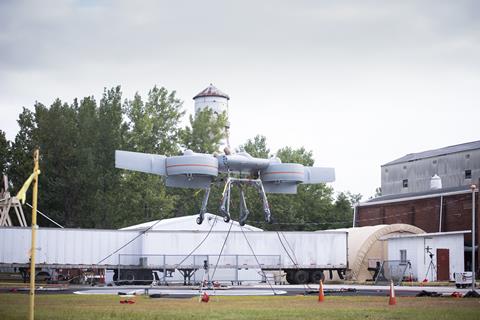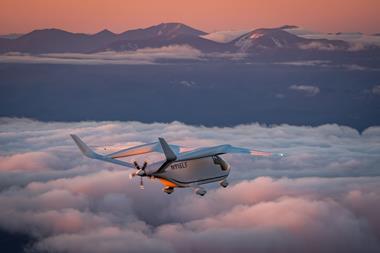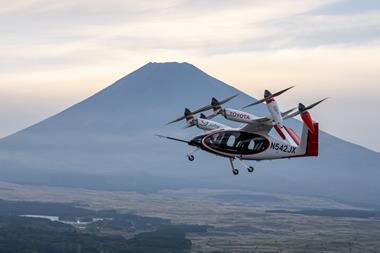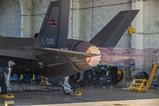US rotorcraft developer Piasecki Aircraft has completed the first flight of a new unmanned tiltfan prototype intended for military use.
The Aerial Reconfigurable Embedded System (ARES) is a vertical take-off and landing (VTOL) uncrewed air vehicle, meant to demonstrate Piasecki’s concept for a multirole support platform based around rotating ducted fans to generate lift.
Piasecki on 10 September revealed the first ARES flight, which included two separate hovers with the prototype aircraft tethered to the ground. The first sortie consisted of a 1min hover and landing, after which a Piasecki team attached a US Army modular payload capsule designed for casualty evacuation.

The ARES demonstrator then completed a second 1min hover flight, Piasecki says, testing the ability of the aircraft’s fly-by-wire flight-control system to maintain a stable hover in multiple configurations.
“Piasecki has led ARES through years of research and development,” says chief executive John Piasecki. “Design iterations, rigorous component testing, system-level validation and more to mature the technology leading up to today’s landmark achievement.”
The payload for the flight – a medical capsule known as the Mobile Multiple Mission Module – was also designed by Piasecki for use with the ARES demonstrator.
While the initial prototype flights were uncrewed, Piasecki says ARES will also boast an optional module for manned flight.
The ARES project began in 2014 as a collaboration between Piasecki and Lockheed Martin, funded by the US Defense Advanced Research Projects Agency (DARPA).
Piasecki is now continuing the development effort alone, funded by a joint grant from the US Army and the US Air Force Research Laboratory (AFRL). A 2023 contract from the AFRL provided Piasecki with $37 million to demonstrate the tiltfan propulsion system.
“ARES creates a new baseline for VTOL technology applied to heavy-payload, time-critical logistics crucial for dispersed operations,” says Barth Shenk, a programme manager at AFRL.
With the success of initial hover testing, Piasecki says it will now move on to expanding the flight envelope of the ARES demonstrator, with an eye toward the experimental vehicle’s intended missions. These include casualty evacuation, logistics resupply and communications support to ground troops.
Piasecki is targeting expeditionary and ship-to-shore operations as likely candidates for the ARES design, which could assist small, distributed combat forces operating over extended distances and in complex terrain.
The company had separately pitched the concept to DARPA as part of the agency’s Speed and Runway Independent Technologies (SPRINT) X-plane project, which sought to produce VTOL-capable aircraft with the ability to cruise at speeds from 400-450kt (740-830km/h).
Piasecki was selected in 2023 as an initial competitor for SPRINT, alongside Bell, Aurora Flight Sciences and Northrop Grumman. However, only designs from Aurora and Bell were subsequently chosen to advance in May.



































